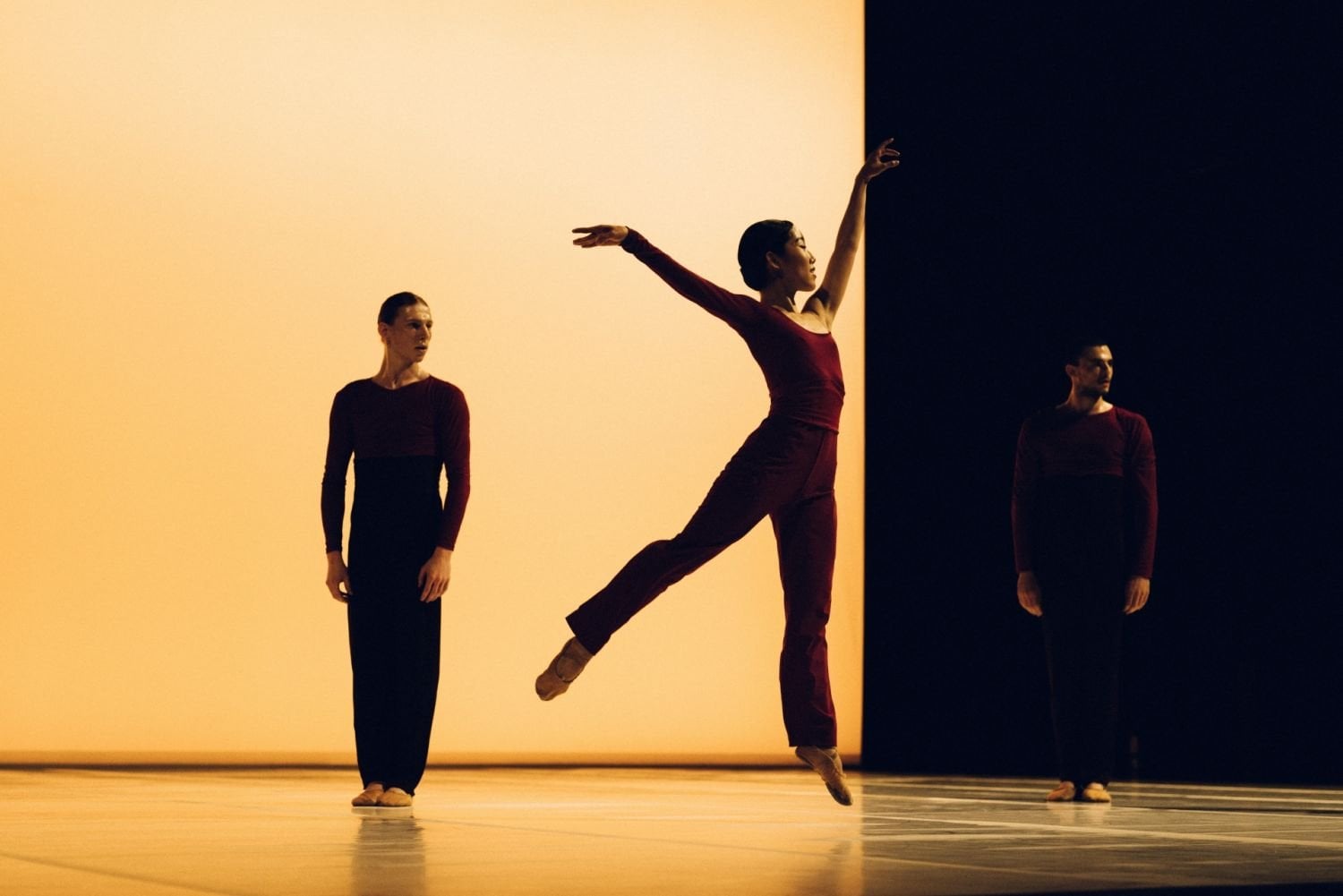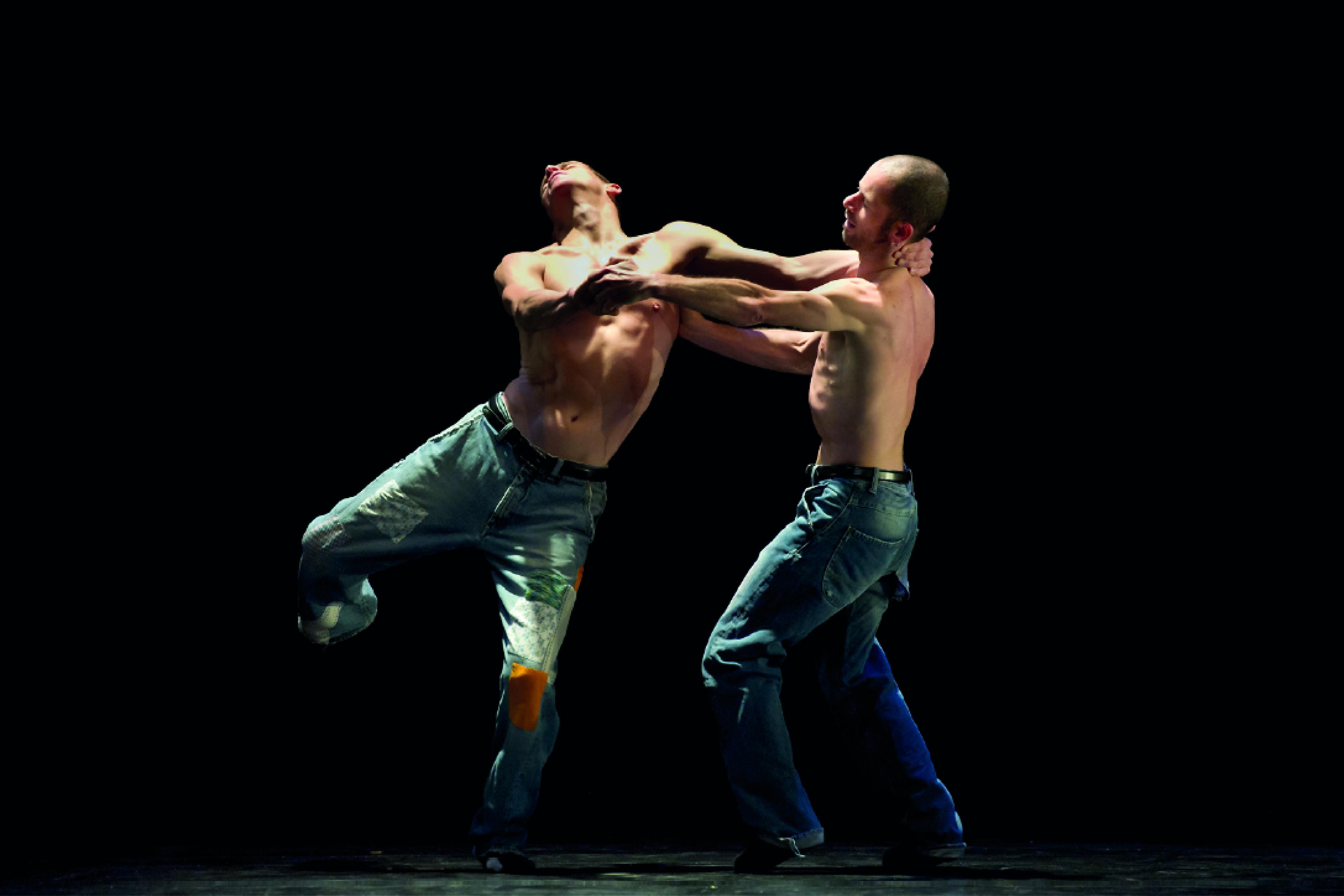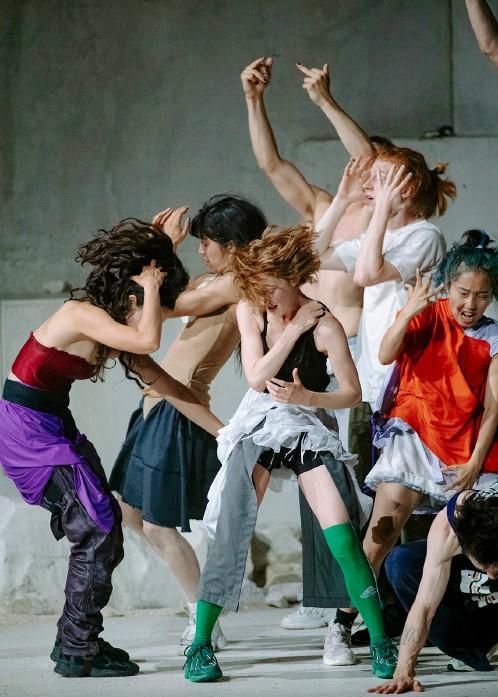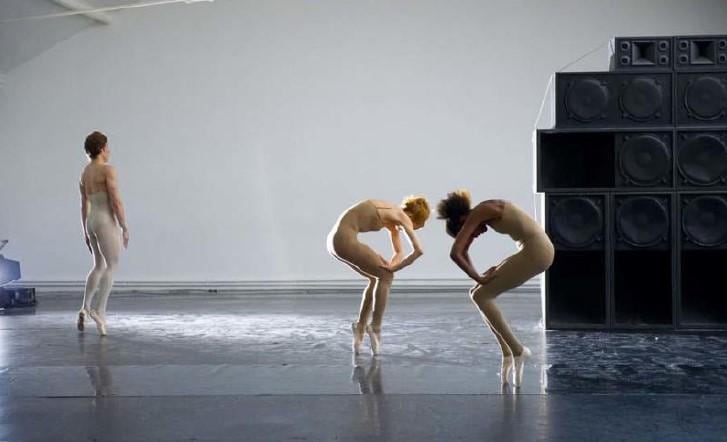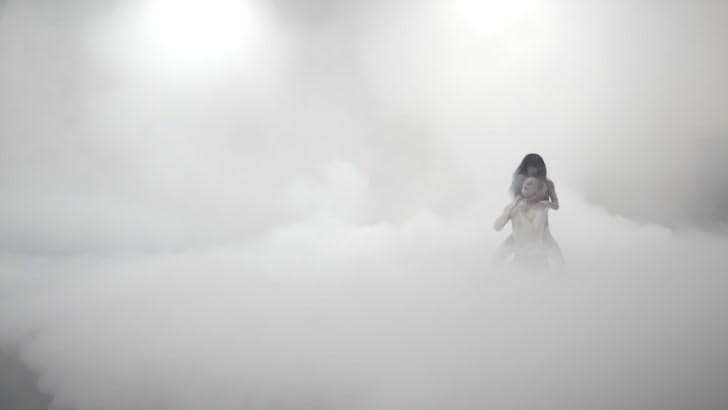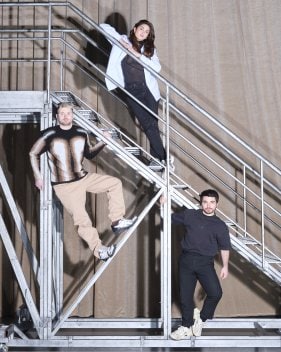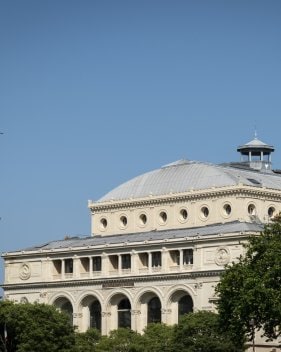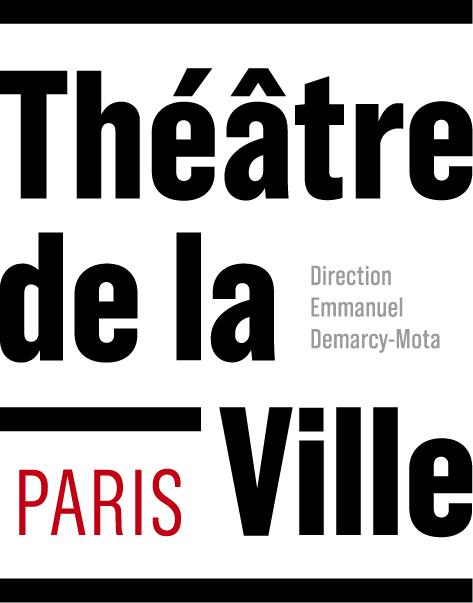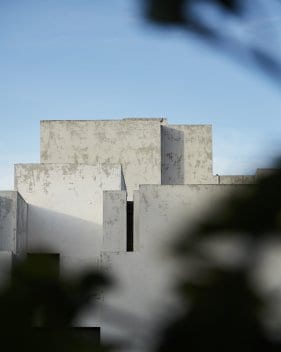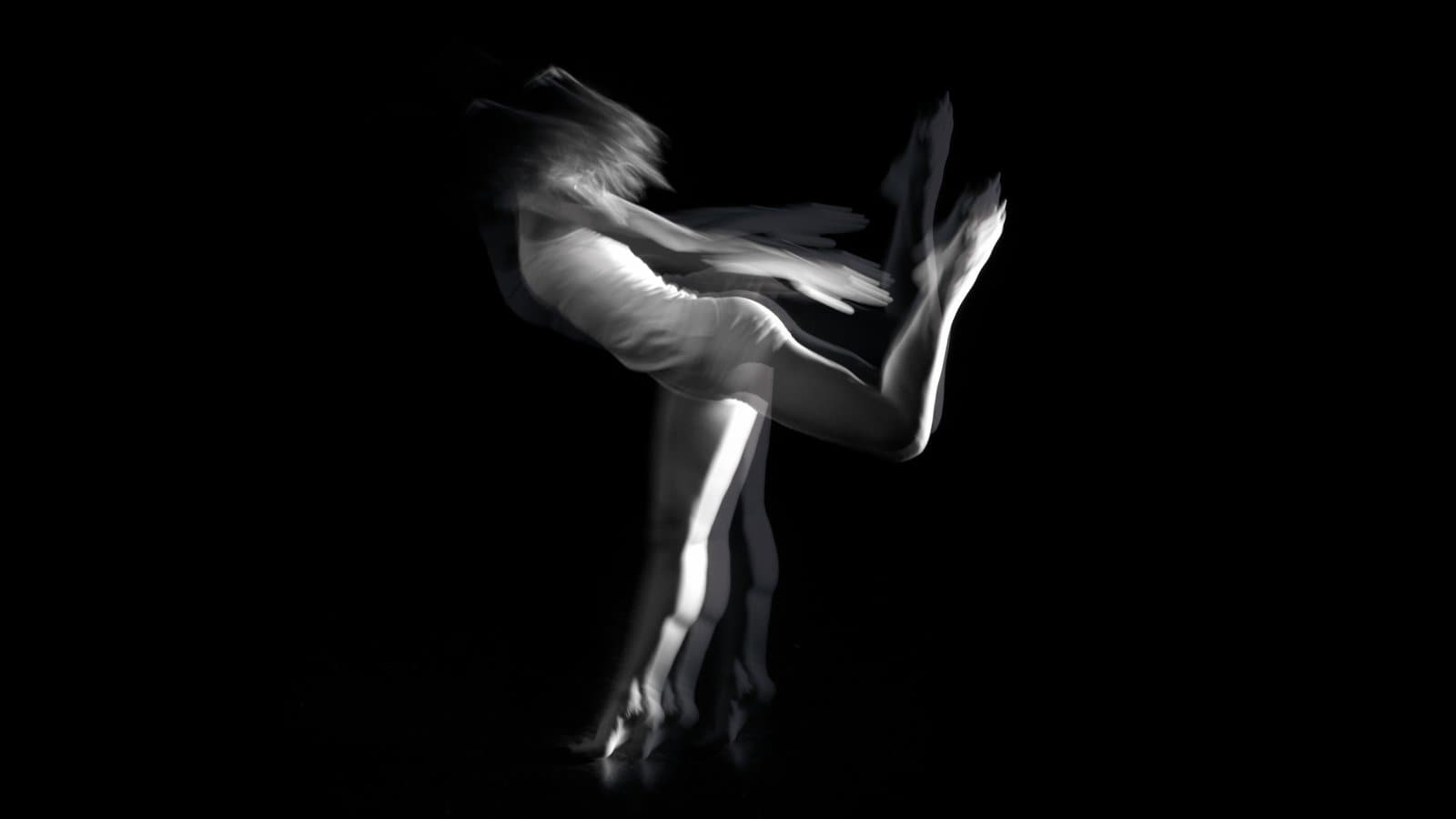Roommates
Ballet national de Marseille
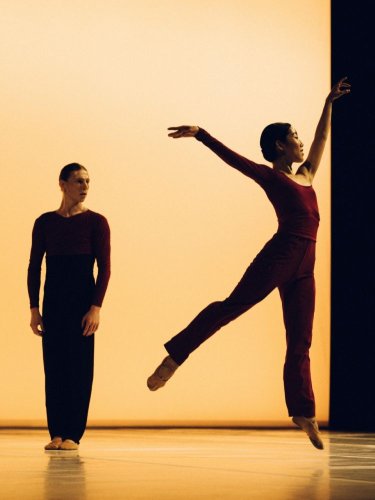
In 2022, Dance Reflections by Van Cleef & Arpels is supporting the Theatre de la Ville in its creation and presentation of Roommates, a (LA)HORDE program performed by the Ballet national de Marseille.
The “new” Ballet national de Marseille celebrates the richness of current dance, with an overview of major choreographic writings.
Since the collective (LA)HORDE took charge of the Ballet national de Marseille, it has worked to redefine the action and direction of a national choreographic Center. It presents Room With a View, a spectacular manifesto, with the composer and DJ RONE. The extract presented here is the culminating point of a collection of short pieces through which (LA)HORDE presents the major works underpinning their view of dance. Among these are the dazzle of Claude Brumachon and Benjamin Lamarche, the musicality and fluidity of Lucinda Childs, the theatre of surreal dance of Peeping Tom, the technical and aesthetic audacity of François Chaignaud and Cecilia Bengolea. Starting with this panorama, the trio will also present a new creation, coming from a vision that is bold, to say the least.
Photo: Concerto by Lucinda Childs © Théo Giacometti
“We created this program to tell, with others, a story that resembles us and to celebrate the plural writings of choreographers that formed our view, provoked our first emotions, and accompany us still today. It seems more important than ever to pay homage to them through this project.
This evening will allow you to go through six pieces, through two artistic propositions of the collective (LA)HORDE, the hyper-realistic dance-theatre of Peeping Tom, the contemporary vision of Claude Brumachon and Benjamin Lamarche, the minimalism of Lucinda Childs, and the shock of the works of Cecilia Bengolea and François Chaignaud.
Some of these creations greatly marked the history of the Ballet national de Marseille, like Les Indomptés by Claude Brumachon, recreated by Marie-Claude Pietragalla in 1999 for the Opera de Marseille. By bringing together such diverse works, we want to question the notion of archives and patrimony. Each of the choreographers explores how to seize or re-seize pieces, be they part of their own repertoire or not.
Why bring back this repertoire and, in doing so, how to modernize it? This program brings together six short pieces of 4 to 15 minutes each, with seven to nine dancers of the Ballet national de Marseille, for a creation at the Theatre de la Ville-Paris, Espace Cardin on May 25, 2022.” - (LA)HORDE - Marine Brutti, Jonathan Debrouwer, Arthur Harel
“By bringing together such diverse works, we want to question the notion of archives and patrimony”
PROGRAMME
Concerto
by Lucinda Childs
09'
Concerto is a nine-minute piece created by Lucinda Childs on September 16, 1993, in Lisbon, in which she reconnects with short forms. The dancers in black evolve on a gray background, between fragility and virtuosity. An organic link is created with the music of Henryk Gorecki, whose non-linear structures disarticulate the clarity of the minimalist lines of Childs’s choreographic vocabulary. After the recreation of Tempo Vicino in 2021, Lucinda Childs rethinks Concerto for seven dancers of the Ballet national de Marseille.
Les Indomptés
by Claude Brumachon & Benjamin Lamarche
09'
The piece Les Indomptés is a nine-minute male duet created in 1992 by Claude Brumachon and Benjamin Lamarche with music by Wim Mertens. Created for dancers of the Jeune Ballet de France who met in Manila, the duet has been presented hundreds of times around the world, and notably by Marie-Claude Pietragalla in 1999, in a will to infuse a new energy into the Ballet national de Marseille.
Violent but passionate, this piece explores a way of moving, hidden in us, to find our primal animality, “to find the tear and the desire in an offered body, to let the volcanism of movement vibrate.” After its entry into the repertoire of the Paris Opera in January 2021, Claude Brumachon and Benjamin Lamarche propose to revisit this body-to-body piece as part of this program, between volcanism and sensuality, sweetness, and savagery, with the dancers of the Ballet national de Marseille.
Room With a View - extract
by (LA)HORDE
15'
Room With a View is conceived as a difficult awakening of consciences, a march driven by the overwhelming prospect of collapse, an exploration of boundaries and necessary interdependences of our bodies. The choreography of (LA)HORDE meets the music of RONE to recount the suffering and legitimate anger of the current generations. They seek to unite within communities of celebration and struggle to create meaning and replay the violence of the world on a loop, to exorcise them.
In a 15-minute extract of Room With a View adapted for this program, (LA)HORDE pursues the exploration of forms of uprising, protest, and revolt through dance, in a murky space, to reveal the paradoxical beauty of chaos.
Creation (being written)
by (LA)HORDE
10’
In this creation, the dancers represent self-love. They play on the narcissism of love, the deconstruction of forms of love, celebrate the freedom to love, to love oneself, to enjoy, to exist, to let go of oneself, exhaust oneself, to look, consume, fight to exist. Revealing in an accumulation of propositions, renunciations, a metaphysical cycle referring to a solitary, consumed, and consumable love. In this victory lap, desire springs infinite and volatile, unstable, decoupled and absolutely free, leaving the choice to the spectator to ask himself: is it about loving all we are, or looking at the overwhelming loneliness felt in front of others?
Oiwa
by Peeping Tom
17’
In an abstract universe, between life and death, mental state and survival, Oiwa creates a vision of the fragile balance between attraction and repulsion, suffering and comfort. The spectators become witnesses to psychological and physical powers at work in the relationship of a couple
The duet puts them in front of a paradox: within a perfect balance, there is always a possibility of falling and breaking the balance in giving yourself completely. To take the risk, or to try to keep control to avoid the fall? How is this torpor produced, by accident or is it voluntary?
The title is drawn from the traditional Japanese story of Oiwa, a legend inspired by facts. Oiwa, a married woman, is neglected by her husband who fell in love with another woman. Pushed by the desire to be with his mistress, the husband decides to slowly poison Oiwa. Throughout her whole disappearance, she suffers, her hair falls out, her face becomes deformed. After her death, Oiwa swears to take revenge for the harm done to her. She returns as an onryo, a vengeful ghost. This myth will later be used by writers to question the traditional ideas of masculine and feminine roles. The character of Oiwa has since become a feminist symbol in Japan.
The duet is the first collaboration between Peeping Tom and the Ballet national de Marseille.
Grime Ballet – Dance Because You Can’t Talk to Animals (Danser parce qu’on ne peut pas parler aux animaux)
By Cecilia Bengolea & François Chaignaud
12’
For this program, François Chaignaud and Cecilia Bengolea draw on the choreographic material of their collaboration Altered Natives’ Say Yes to Another Excess – TWERK, and the solo Stitches created by Cecilia Bengolea to think of an unpublished hybrid piece of twelve minutes with four dancers of the Ballet national de Marseille.
The solo Stitches, created by Cecilia Bengolea for the Japanese dancer Erika Miyauchi, is a minimalistic performance that blends ballet and dancehall. In Altered Natives’ Say Yes to Another Excess – TWERK created in 2012, François Chaignaud and Cecilia Bengolea invent a singular and physical writing, that plays with sexual identities and draws on their practical and anthropological experience of club dances (Jamaican dancehall, Krump, house, split & jump...)
This work and game of writing will be combined with the strength and intensity of the musical repertoire of Grime. This electronic music born in East London in the 2000s combines, mixes, and transforms sounds from dancehall, hip hop, and UK Garage.
